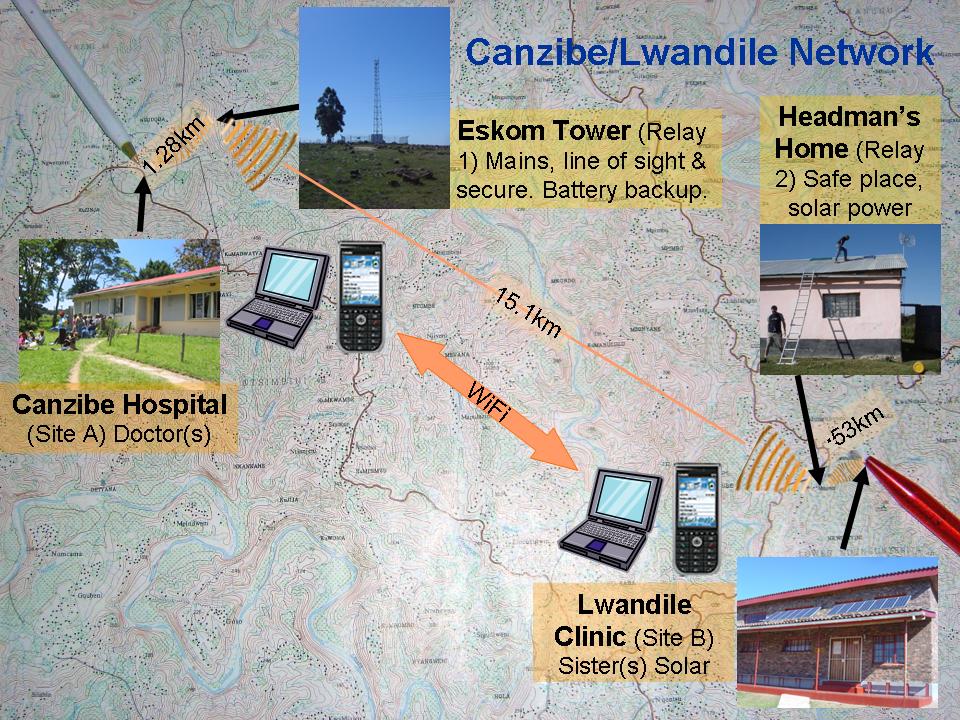
| Rural Telehealth |
||
 |
MUTI Project |
|
We have been iteratively evolving a telemedicine consultation system for rural hospitals and clinics in a remote part of the Eastern Cape in South Africa over a period of four years. Our aim is to enable the nurses at clinics to treat a wider range of problems locally by consulting with hospital doctors whom they normally never meet nor speak to. The system, called MUTI, enabled nurses and doctors to use a wireless communication system to contact one another. Another goal of this Information and Communications Technology for Development (ICT4D) project was to stop unnecessary travel by patients from the clinic to the hospital, as transport in these poverty-stricken and geographically dispersed areas was difficult and expensive for local people. As we expected, integrating new technologies into people’s everyday work lives was not straightforward or easy. The system had to cope with technical issues, e.g., frequent power outages, and with social issues, e.g., the fact that the doctors and nurses were so busy they barely had time to use the system. The overall aim of our various ICT4D projects was to investigate methods of creating useful systems for socio-economic development in deprived areas. This was essentially a design problem. We wanted to learn how to develop a usable and sustainable system which fitted into the social context of its use. |
||
Context
We first gained the approval of local community leaders and both regional and provincial Department of Health managers. Rural WiFi networks remain legally problematic in South Africa. Our goal is to influence national policy to “open up” these technologies for empowerment of disadvantaged people across the country. We adopted the terms First Mile and First Inch as a battle cry to place the users first and to think firstly of how they actually use the system. The term First Mile has gained wider currency as a way to turn around the telecom approach where the line to the subscriber, the local loop, was referred to as the Last Mile. The term First Mile reversed that form of thinking where the user was placed last in the planning of the system. The First Inch was the user interface to the system, a place where meaningful access can also break down.
Telemedicine has long been proposed as a way of overcoming relative underdevelopment of rural areas, coupled with wonderment at its slow “normalization”. Telemedicine has had a number of definitions but the basic idea is the provision of health care where interaction is mediated by ICT.
A useful distinction is made in telemedicine between two different delivery methods: (A) With real-time or synchronous telemedicine, communication between participants happens at the same time, e.g., a video-conference. This requires reliable communications with relatively high bandwidth. (B) With store-and-forward or asynchronous telemedicine, information is recorded in digital form by the sender and sent to the receiver who can view it at a convenient time. This can deal with communication interruptions and lower bandwidth.
